The Cantonese Assembly Hall in Hoi An boasts a distinctive beauty that captivates the eyes of any passerby. It stands out amidst the ancient houses with predominantly orange and yellow tones in Hoi An. When visiting the assembly hall, you can explore the architectural beauty and the everyday lifestyle of the local people in this area.
Table of Contents
Where is the Cantonese Assembly Hall?
- Address: 176 Tran Phu Street, Hoi An, Quang Nam.
- Entrance Ticket: Free of charge.
Hoi An Cantonese Assembly Hall is located right on Tran Phu Street, No. 176. Located on a heritage road with many architectural works of high historical value, the assembly hall has attracted many visitors every year. .
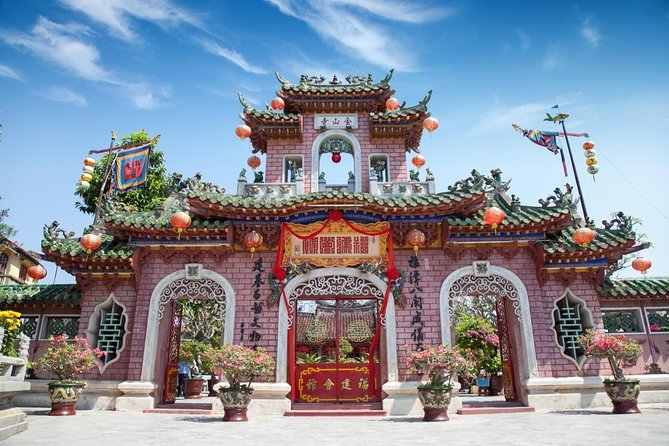
History of Hoi An Cantonese Assembly Hall
You may not know, but from the 15th to 19th centuries, Hoi An ancient town was extremely busy with many international trading ports. This place especially attracts the attention and activities of the Chinese. They chose this place as a place to trade and live.
The Cantonese Assembly Hall was built in 1885 by a Chinese merchant. Originally, this place worshiped Confucius and Thien Hau Thanh Mau . It was not until 1911 that the assembly hall was moved to worship Tien Hien and Quan Cong.
This place is considered a spiritual place for merchants. At the same time, it is also the place where community activities take place, helping each other live.
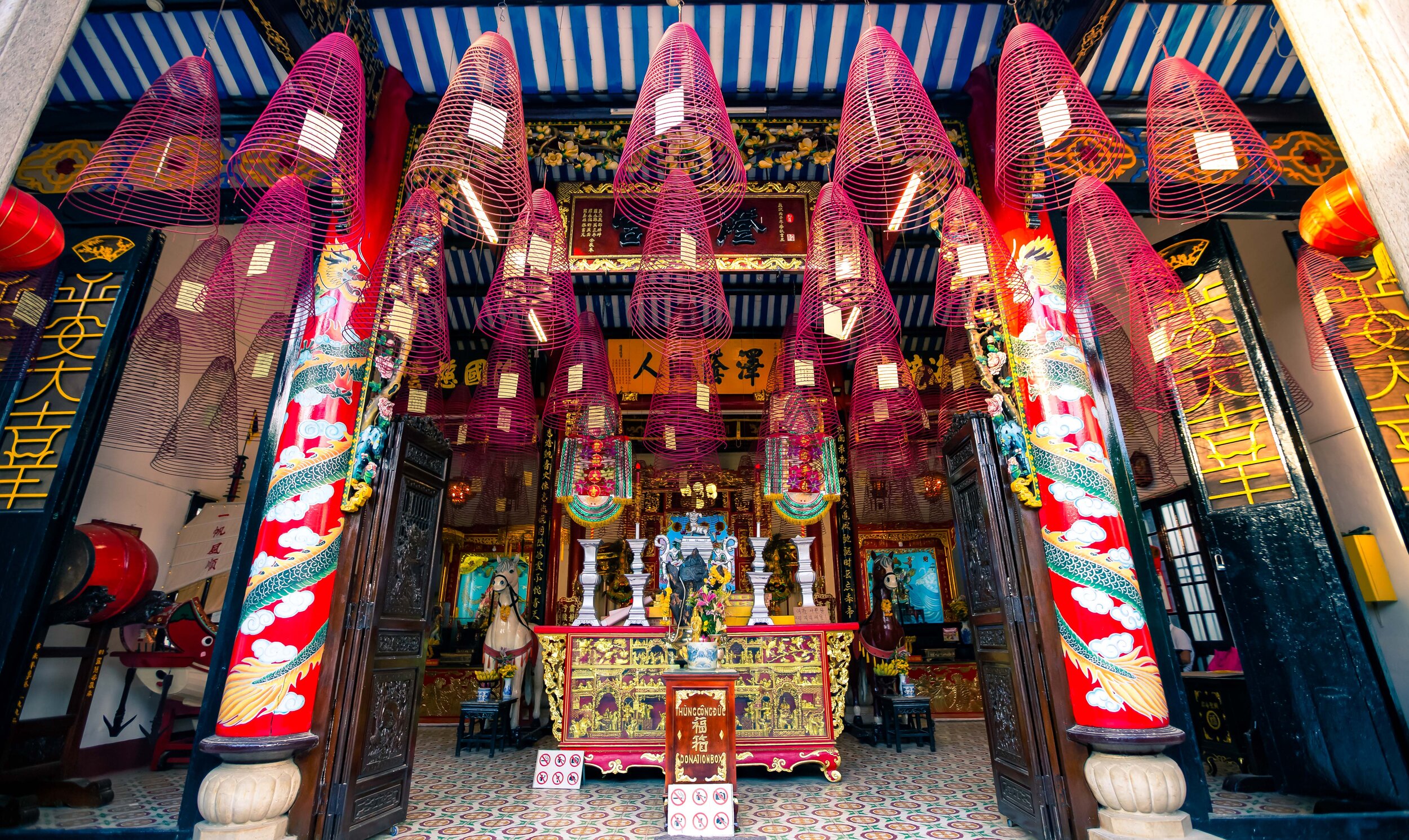
The name Guangdong originates from the fact that this place worships a general named Quan Cong. According to the beliefs of the Chinese people, this shop is full of the words Trung – Meaning – Faith – Wisdom – Humanity and Courage. They believe that Quan Cong will bring good luck as well as support the peaceful life of black people and favorable business.
Meaning of the Name Cantonese Assembly Hall in Hoi An
The Cantonese Assembly Hall is also known by other names such as Quang Trieu Assembly Hall or Ong Pagoda because it houses the altar of Quan Cong, a famous Chinese general. According to the beliefs of the Chinese community, the deity Quan Cong embodies the six virtues of “loyalty, righteousness, trustworthiness, wisdom, humanity, and bravery.” He is considered a “lucky” deity believed to bring prosperity and favorable conditions to their business endeavors
Guide on How to Get to the Cantonese Assembly Hall in Hoi An
The Cantonese Assembly Hall is located in the Old Town of Hoi An, approximately 30km south of Da Nang. You can reach Hoi An using one of the following methods:
- Motorbike: Travel along Vo Nguyen Giap and Truong Sa streets. Then, when you reach Hai Ba Trung Street, turn right and continue straight to Hoi An.
- Bus: Operating since 2015, the bus is a convenient and affordable option, costing only 30,000 VND per one-way trip from Da Nang to Hoi An or vice versa.
- Private Car Service: If you seek a quick and convenient travel option with door-to-door service, the private car service with drivers in Hoi An from DanangPrivateCar.com can meet your needs. Professional drivers with basic English will make your journey to Hoi An easier. Additionally, you can explore attractions along the way, such as Marble Mountains and My Khe Beach,… Book your private car from Da Nang to Hoi An today to arrange a detailed itinerary.
- Grab/Taxi: This option tends to have a higher cost, so you may want to consider the overall expense before choosing it. Taxi prices usually range from 350,000 to 430,000 VND for one way and 750,000 to 950,000 VND for a round trip, making it a relatively expensive option compared to the other methods mentioned above.
Hoi An Cantonese Assembly Hall – Vietnamese-Chinese cultural interference
When looking at the Cantonese Assembly Hall, if you have a little understanding of architecture, you will see that there is an interference between Vietnamese and Chinese cultures.
Architecture of Cantonese Assembly Hall in Hoi An
Wood and stone are the two main materials to build this assembly hall. Every detail designed to decorate the hall is also meticulously carved. Thanks to that, they bring many features and are indescribably beautiful.
This architectural work is built in a closed way resembling the shape of the letter Quoc. The whole project includes the three gates, the garden, the main hall and the backyard.
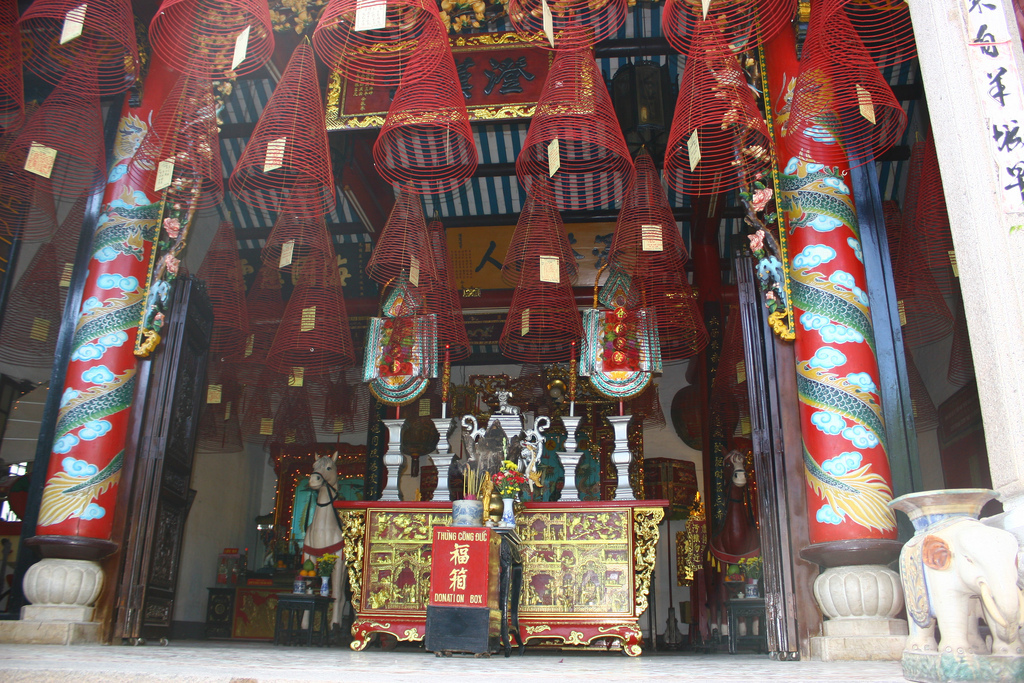
- Three-way gate: When you set foot in this area, you will immediately admire 3 large paintings corresponding to 3 legendary gods, namely Luu Be, Truong Phi and Quan Cong.
- Electricity bill: Large scale, many walls are made of stone. The roof has many floors and is built in a soaring style associated with many ancient legends.
- Main hall: Consists of a large space, supported by large pillars. The main hall is divided into 3 main compartments for worship.
- Backyard: Spacious with lots of trees. The highlight of this space is the fountain designed in the shape of a dragon. Besides, there is also a painting of Van Truong Quan which is delicately carved, detailed to every line.
Ancient relic of the Cantonese Assembly Hall
At the present time, you can still admire many ancient relics in the Cantonese Assembly Hall. And this is also an experience you should know when participating in Hoi An tour ! The typical antique relics of high value in the assembly hall are:
- Censer
- Enamel porcelain stoneware
- 4 paintings
- statue of Quan Cong on a large horse.
If you are self-sufficient traveling to Hoi An , you can read the documents about these relics in advance! If you follow the tour, the guide will explain to you when you arrive in front of each ancient relic.
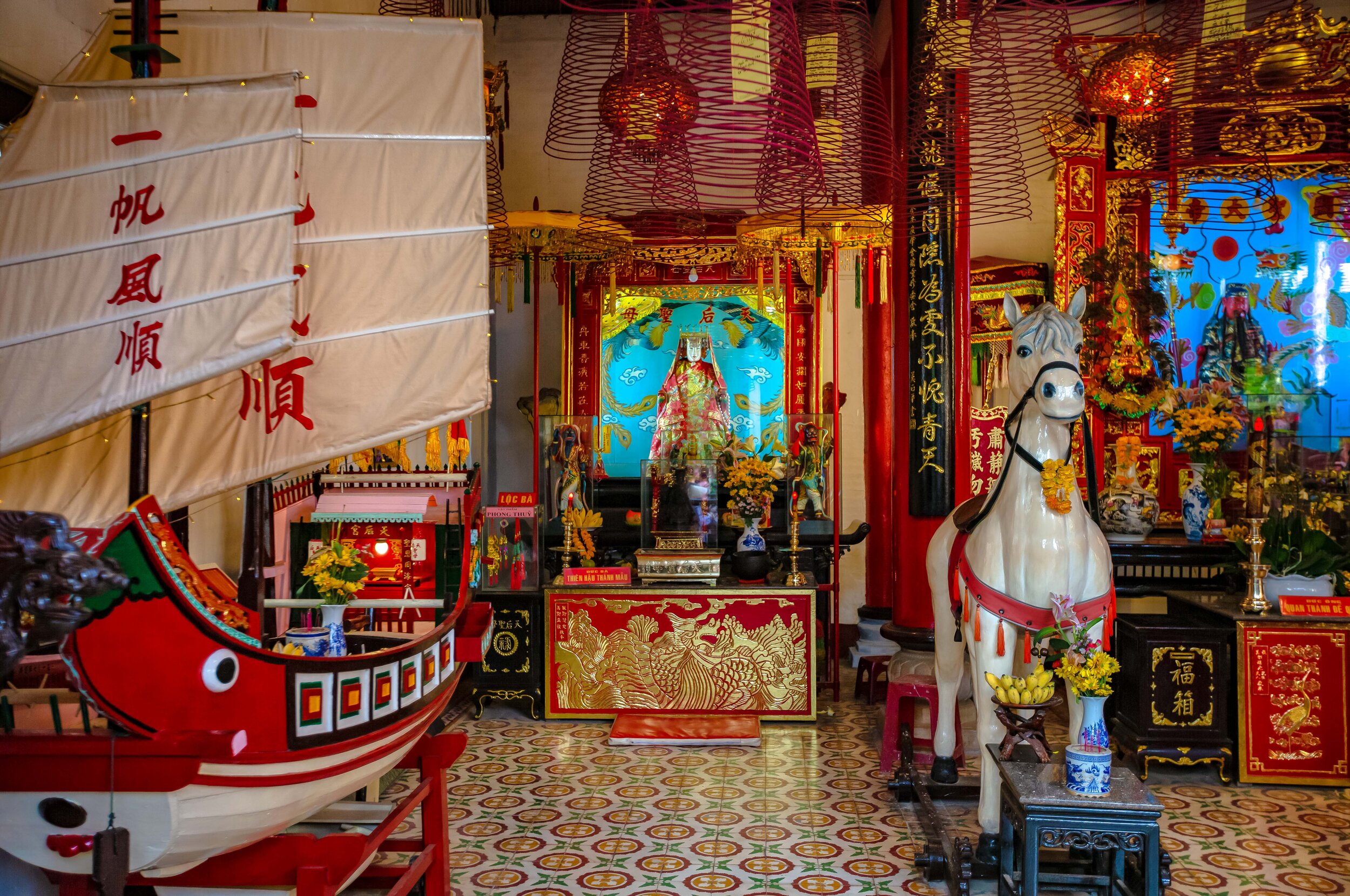
Traditional activities
At the Cantonese assembly hall, there are usually two big festivals: Nguyen Tieu and Via Quan Cong.
- Nguyen Tieu Festival:
It is held on the full moon of the first lunar month every year. The festival usually takes place within 2-3 days. The spiritual meaning of this festival is explained by the people as the time to worship, pray for a full life, and give thanks for favorable business.
The scale of this festival is very large, including old folk games for people to enjoy. The most typical games are lion dance, firecrackers, lake cruise….
- Festival of Quan Cong
Usually held on June 24 every year at Quan Cong Temple. This is considered the oldest belief of the people of Hoi An Thanh. The offerings that are usually made for this festival are very elaborate. At the end of the ceremony, people will start participating in sports activities and processions. The whole streets of Hoi An these days are often immersed in the bustling sound.
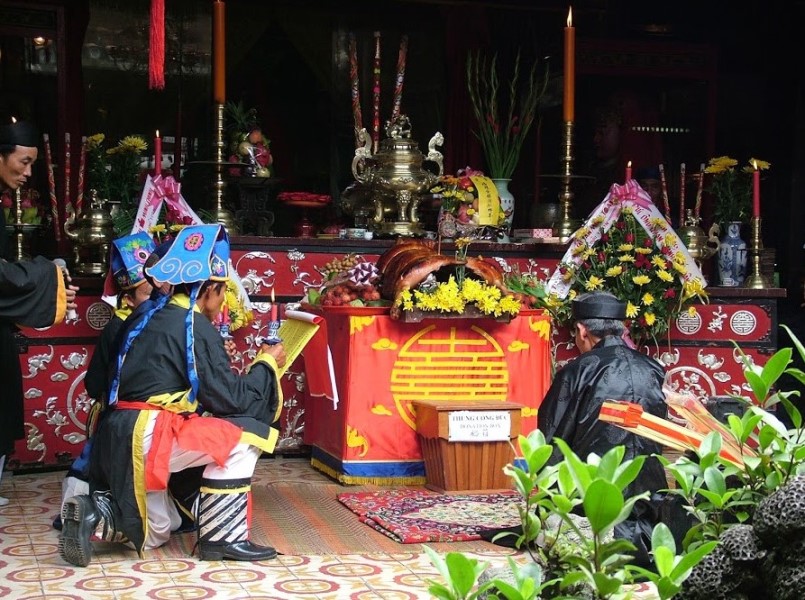
Tourist Attractions Near the Cantonese Assembly Hall
Due to its central location, the Cantonese Assembly Hall is surrounded by many other interesting tourist attractions that you can explore when you visit.
Hoi An Ancient Town
This famous city is home to over 1000 well-preserved historical sites, including ancient houses, streets, communal houses, and temples. When visiting Hoi An Ancient Town, tourists can enjoy the fresh air, spacious atmosphere, and immerse themselves in the beauty of ancient architecture, accompanied by the warm hospitality of the local people.
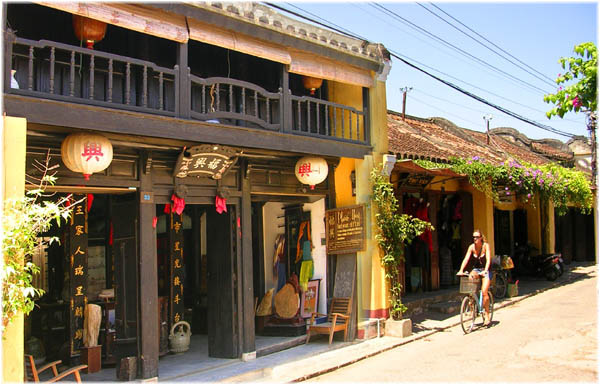
Ong Pagoda
A spiritual destination in Hoi An, Ong Pagoda, also known as Quan Cong Temple, is a long-standing and renowned tourist spot. Built in the 17th century, the pagoda maintains its unique and intact architecture, housing many valuable artifacts with significant historical importance.
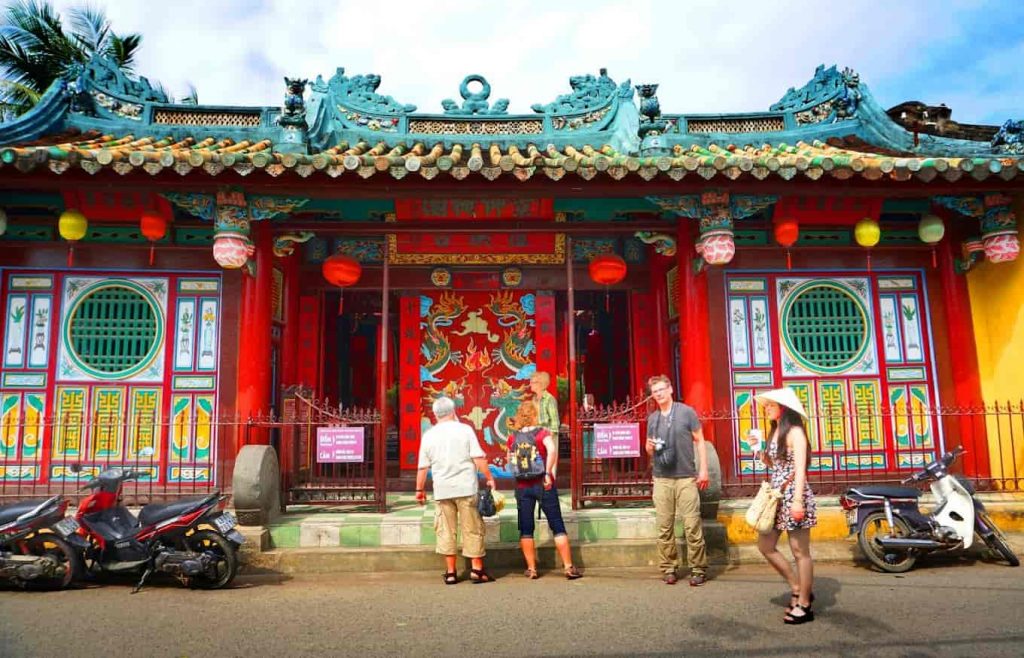
Tan Ky Ancient House
Recognized as a national heritage site, Tan Ky Ancient House is designed with a blend of Japanese, Chinese, and Vietnamese architectural styles, creating a harmonious and unique appearance. It has had the honor of hosting various foreign heads of state and politicians.
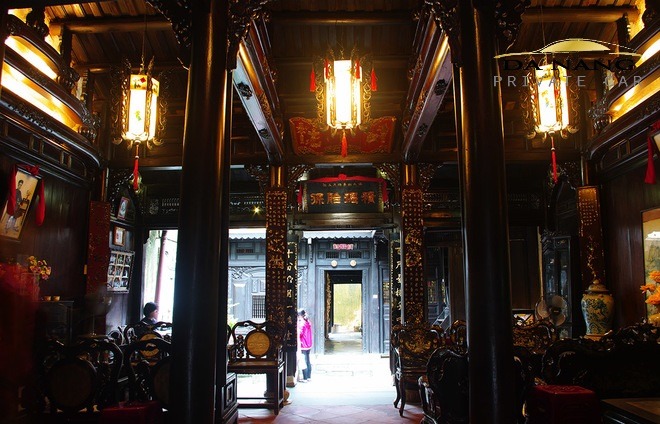
Fujian Assembly Hall
A famous destination with distinctive Chinese architecture, Phuc Kien Assembly Hall is the most beautiful among the three well-known assembly halls in Hoi An. This place is dedicated to the worship of Thien Hau Thanh Mau and holds the status of a national cultural and historical monument.
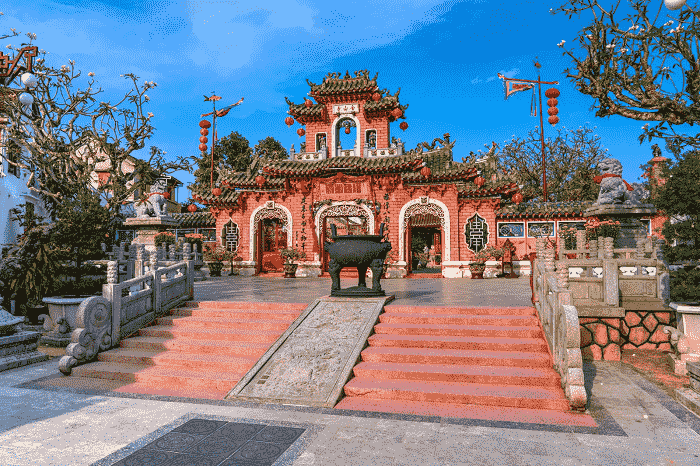
Chaozhou Assembly Hall
Also known as Ong Bon Pagoda, Chaozhou Assembly Hall is the center of the Chinese community in Hoi An. With intricate and delicate porcelain decorations, this assembly hall is a must-visit tourist attraction in Hoi An Ancient Town.
Important Notes When Visiting the Cantonese Assembly Hall
- Appropriate attire: As it is a tourist attraction, please be mindful of choosing suitable clothing for your visit. Avoid wearing shorts/skirts, sleeveless shirts, and excessive makeup.
- Politeness during the visit: Refrain from speaking loudly or laughing, as it is considered disrespectful in this sacred place.
- Maintain cleanliness and respect for the environment by disposing of litter in designated areas.
- Recommended items: Wear comfortable shoes, bring sun protection items such as an umbrella and sunscreen to easily move around and explore various tourist spots in Hoi An.
If you have the opportunity to travel to Hoi An, don’t forget to visit the Cantonese Assembly Hall. With its unique and vibrant architecture, along with a serene atmosphere, the Cantonese Assembly Hall will provide tourists with a complete and memorable spiritual travel experience.

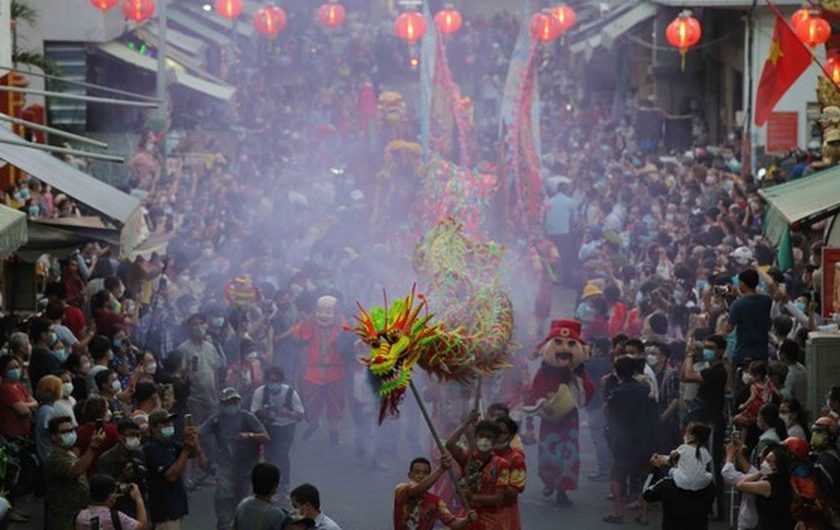
Comments